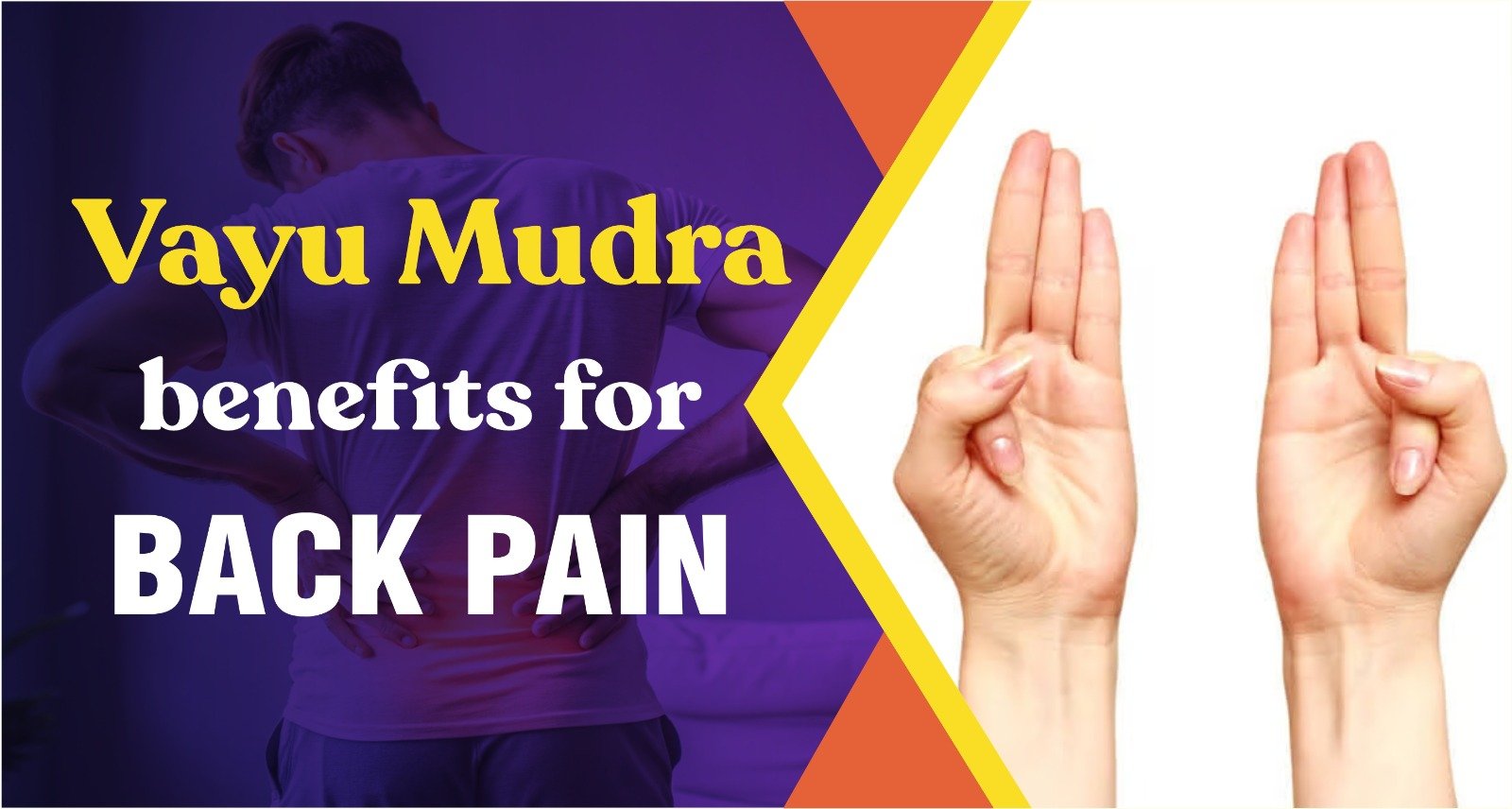Vayu Mudra for Back Pain
In yogic science, mudras hold a special significance. According to yogic philosophy, a mudra is a position or gesture that enhances feelings of happiness and joy. By practicing mudras, the brain is stimulated to remain alert, encouraging a smooth flow of energy that helps control bodily functions, such as the respiratory system, and even the positioning of the eyes. Ayurveda describes five types of vayu (air elements) in the body: Apana, Vyana, Udana, Samana, and Prana, which are the basis for different mudras such as Gyan Mudra, Vayu Mudra, Dhyana Mudra, and Yoni Mudra. In yogic tradition, stretching and crossing fingers in specific ways helps awaken the body and mind, enabling us to connect to higher energies.

Scientists believe that all nerve endings of the human body reach the fingertips. By applying pressure on the fingertips, the nervous system is stimulated, activating the brain in a simple way. This improves both physical and mental health due to positive hormonal changes.
What is Vayu Mudra?
In Ayurveda, “Vayu” (air) represents movement, and Vayu Mudra is a hand gesture that helps balance the air element within the body. This mudra regulates air, supporting the digestive system by removing blockages, and helps in alleviating ailments caused by imbalances in the air element. Practicing Vayu Mudra regularly, particularly alongside breathing exercises (Pranayama), is more beneficial and simple.
Benefits of Vayu Mudra for Back Pain
Vayu Mudra is especially effective for back pain caused by air imbalances (Vata dosha). Practicing it regularly along with poses like Katichakrasana, Ashwa Sanchalanasana, and Surya Namaskar can gradually relieve back pain. Practicing this mudra also relieves pain in the neck, shoulders, and back.
How to Practice Vayu Mudra for Back Pain:
- Sit in a quiet place in Sukhasana, Vajrasana, or Padmasana, keeping your back straight.
- To calm your mind, take a few deep breaths.
- Place your hands on your knees with palms facing up. Gradually fold your index finger so it touches the base of your thumb.
- Gently press your index finger with your thumb. At first, this may feel uncomfortable, but with practice, it will become easier. Keep other fingers straight.
- Stay still, breathe peacefully, and, if desired, chant “Om” to enhance mental calm.
Additional Benefits of Vayu Mudra
- Gas Relief: Increases oxygen flow to the brain, helping remove toxins from the body and reducing gas issues.
- Arthritis Relief: Balances Vata dosha, aiding conditions like osteoporosis and rheumatoid arthritis, reducing joint pain, and improving joint mobility.
- Stress Reduction: Increases blood flow, stimulating melatonin production, which helps alleviate stress and promotes relaxation.
- Hair Growth: Improved circulation aids in delivering essential nutrients to the scalp, reducing hair fall and promoting growth.
- Parkinson’s Relief: Supports a healthier nervous system by balancing the air element, potentially reducing tremors in early stages.
- Weight Loss: Aids digestion, preventing toxic buildup and fat accumulation in the body.
- Slip Disc and Sciatica Relief: Regular practice with Panchakarma treatment can aid slip disc recovery. Practicing Surya Namaskar with Vayu Mudra helps alleviate sciatica pain.
Guidelines for Practicing Vayu Mudra
- When to Practice: The best time is on an empty stomach, typically in the morning or evening, or 4 hours after a meal.
- Duration: Practice for 20-25 minutes.
- Pain Relief: Shunya Vayu Mudra is ideal for general pain relief.
- Timing: Practicing at dawn (Brahma Muhurta) is most beneficial.
Vayu Mudra can also be practiced while sitting, standing, or even lying down. However, people with hand or wrist injuries should avoid it.
Thanks !

